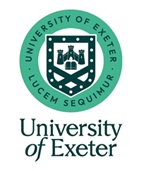Assessment and Performance Data
School Performance Tables
There is no published data for 2019-2021 due to Covid-19. Click here to access the DfE, School Performance Tables which are published by the Secretary of State on the Department for Education’s website.
The DfE are also advising against making comparisons for 2022 data. As a school, we have included our internal data and national headlines for 2024, so parents can see how we are working to support the children in our school. Click here.
Purpose of Assessment
Assessment in school is used to build a picture over time of a child’s learning and progress across the curriculum. A range of assessments provides information on the performance of a child at a point in time (e.g. testing) or over the school year.
The results are used to plan on-going learning and for whole-school evaluation. Data from the assessments can be used by teachers and schools to identify priorities for development including changes they may wish to make in teaching approaches, priorities for staff development and for the acquisition of resources.
Assessment information can also be used as part of the monitoring of the effectiveness or otherwise of the initiatives put in place to improve children's learning.
'There are three main forms of assessment:
- formative assessment, which is used by teachers to evaluate pupils’ knowledge and understanding on a day-to-day basis and to tailor teaching accordingly;
- in-school summative assessment, which enables schools to evaluate how much a pupil has learned at the end of a teaching period;
- and nationally standardised summative assessment, which is used by the Government to hold schools to account.’
(Department for Education Final report of the Commission on Assessment without Levels September 2015.)
Standard Attainment Tests (SATS)
Children at the end of Y6 will be assessed to see if they are reaching age-related expectations. Assessment results reported to parents use the following terminology:
- Working towards the expected standard (WTS)
- Working at the expected standard (EXS)
- Working at greater depth within the expected standard (GDS)
Children cannot work at a ‘greater depth’ in science because these criteria do not yet exist.
Progress
Every child’s progress is individual and unique. Tracking of children's progress begins upon entry all the way through to their exit and shows progression over time. At St Edmund's we use the 'Insight' tracking system. It allows teachers to input and track pupil’s progress against the National Curriculum. As we have just introduced it (September 2023)we will track children's attainment and progress in English, Maths, Science and RE with foundations subject coming online the following year.
- Nursery and Reception use the EYFS curriculum
- Year 1 to Year 6 use the National Curriculum
Assessment in EYFS
The Good Level of Development is the measure that helps to demonstrate the proportion of children who are achieving expected levels in the prime areas of learning (communication and language, physical development and personal, social and emotional development) and in maths and literacy at the end of Reception.
Assessment in KS1
Year 1 Phonics Screening
The Phonics Screening Check is a short assessment to confirm whether individual pupils have learnt phonic decoding to an appropriate standard. It will identify the children who need help and support with their reading skills. Children will retake the screening in Y2 if they did not reach the required level in Y1. (DFE 2011)
End of KS1 Assessments
Children are no longer required to sit external KS1 Assessments. However, as a school, the children will continue to complete an assessment to enable us to track their progress over time.
Assessment in KS2
Multiplication Check
In Year 4, the children are required to complete a Multiplication Table Check (MTC) which assesses their knowledge of the multiplication tables. Please click here for government advice on the MTC for parents.
KS2 SATs
In 2016 changes were made to KS2 SATs based on the new curriculum. Results are reported as a scaled score between 80 and 120, with 100 being the national expectation for a Year 6 pupil.
Progress Scores
Individual pupil level progress scores are calculated in comparison to other pupils nationally. For all mainstream pupils nationally, the average progress score will be zero. A school’s progress scores for English reading, English writing and mathematics are calculated as its pupils’ average progress scores. This means that school-level progress scores will be presented as positive and negative numbers either side of zero. A score of 0 means pupils in this school, on average, do about as well at key stage 2 as those with similar prior attainment nationally. A positive score means pupils in this school on average do better at key stage 2 than those with similar prior attainment nationally.









